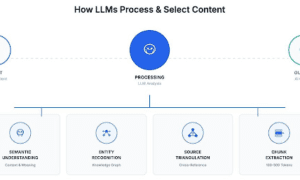Living in a highly digitized era can be incredibly convenient. Instead of having to go to a store to develop film, we can easily share photos from our smartphones. Forget the bulky video camera when on vacation; a Samsung Galaxy is your best friend when it comes to capturing priceless memories with the kids. And for businesses, being able to share documents is a huge time (and paper) saver.
But when vast amounts of information circulate the internet every millisecond, and as we have interwoven our personal, professional, and societal structures with digital platforms, the vulnerabilities to malicious attacks and data breaches have grown exponentially.
In fact, Forbes describes a recent poll by the Deloitte Center for Controllership, which found that 34.5% of executives noted that their organizations’ accounting and financial data were under cyber threat in the last year. Of these, 22% encountered at least one cyber incident, and 12.5% faced multiple threats. And 48.8% of top executives anticipate an increase in the size and number of cyber-attacks on their financial data in the upcoming year. But only 20.3% reported that their finance teams collaborate consistently with cybersecurity departments. This highlights a potential vulnerability, as many executives foresee growing cyber risks, especially targeting accounting systems.
Cybersecurity has emerged as the linchpin of global safety and business continuity. This isn’t merely about protecting data; it’s about safeguarding our way of life in a digital age, defending against threats that can destabilize economies, compromise personal identities, and disrupt critical infrastructures. The emphasis on strong cybersecurity measures is not only a technical necessity but a fundamental commitment to preserving trust, privacy, and stability in a world increasingly reliant on digital interactions.
Thus, we turn to industry experts like Abhishek Bansal, a renowned cybersecurity thought leader, to bridge the gap between the pressing challenges faced by financial departments and the cutting-edge solutions the cybersecurity world can offer. With the increasing vulnerability of accounting and financial systems to cyber threats, Bansal’s insights underscore the importance of robust cyber defense strategies and emphasize the need for seamless collaboration between finance and cybersecurity teams. His expertise offers a beacon of hope in navigating the complex maze of digital threats in today’s interconnected business landscape.
Question: Abhishek, thank you for joining us today. With your extensive background in IAM and cybersecurity, we have much to discuss. Let’s start with the basics. In your own words, who is Abhishek Bansal?
Abhishek Bansal: Thank you for having me. I started my journey as a software developer but gradually found my calling in cybersecurity, particularly in Identity and Access Management (IAM). I’ve been blessed to work with incredible teams, where we were able to scale a startup to 900% growth, and have delved deeply into the intricate world of cybersecurity in the process.
Q: You’ve had a storied career that has seen the evolution of cybersecurity challenges. What, in your opinion, is the most significant challenge facing the IAM field today?
Bansal: IAM is at the heart of ensuring that the right people have the right access to the right resources at the right time. The biggest challenge today is the dynamic and borderless nature of our digital environments. With cloud adoption, remote work, and a myriad of devices accessing systems, ensuring robust and adaptable IAM solutions has never been more crucial.
Q: You recently wrote a piece for the Cloud Security Alliance on “Implementing Least Privilege in AWS”. Why is the principle of least privilege so essential in today’s cybersecurity landscape?
Bansal: The Principle Of Least Privilege (POLP) ensures that users, systems, or processes have only the necessary access to perform their tasks and nothing more. In a world of escalating threats, minimizing potential avenues of attack is critical. By implementing least privilege, we drastically reduce the risk of accidental data exposure, insider threats, and malicious breaches.
Q: Let’s talk about your upcoming book on migrating systems to AWS cloud securely. What prompted you to tackle this subject?
Bansal: The migration to cloud environments has been phenomenal in the past decade. However, many companies make the shift without a clear understanding of the security implications. I felt there was a need for a comprehensive guide that not only highlights the benefits but also the risks of such migrations, offering readers a roadmap to secure cloud transitions.
Q: Your career has also spanned both the technical and business sides of cybersecurity. How do you bridge the often cavernous gap between these two worlds?
Bansal: It’s all about communication and interpersonal skills. The technical side needs to understand the business implications of their actions, while the business side needs to recognize the importance of cybersecurity. By translating technical jargon into business risks and benefits, and vice versa, I’ve been able to foster better understanding and cooperation between the two.
Q: You’ve emphasized the ethical use of AI and have even spoken about the urgent need for a coordinated approach to AI ethics and regulation. Can you expand on this?
Bansal: AI, with its transformative power, has both potential benefits and risks. As AI systems become more integrated into decision-making processes, there’s a pressing need to ensure they operate ethically and fairly. We need international standards and regulations to guide AI development, ensuring it serves humanity and doesn’t inadvertently cause harm.
Q: Lastly, for aspiring cybersecurity professionals, what’s the one piece of advice you’d give based on your journey so far?
Bansal: Stay curious. The cybersecurity landscape is ever-evolving, with new challenges and technologies emerging regularly. Continuous learning and adaptability are key. Also, remember that cybersecurity isn’t just about technology; it’s about people and processes too.
Q: Abhishek, thank you for sharing your insights and experiences with us. We look forward to your upcoming book and wish you continued success in your endeavors.
Bansal: It’s been a pleasure. Thank you for the opportunity.
About Abhishek Bansal
Abhishek Bansal is a thought leader in IAM with over a decade of experience in the cybersecurity industry. He has held senior cybersecurity leadership positions at large enterprises and was an early team member of an IGAaaS-based cybersecurity startup. A recognized global leader in cybersecurity, angel investor, startup advisor, and subject matter expert in information security (Identity and Access Management, Identity Governance and Compliance), Bansal has a rare ability to understand both the technical and business sides of the industry.
Learn more: https://www.linkedin.com/in/uscgradabhishekbansal/






























